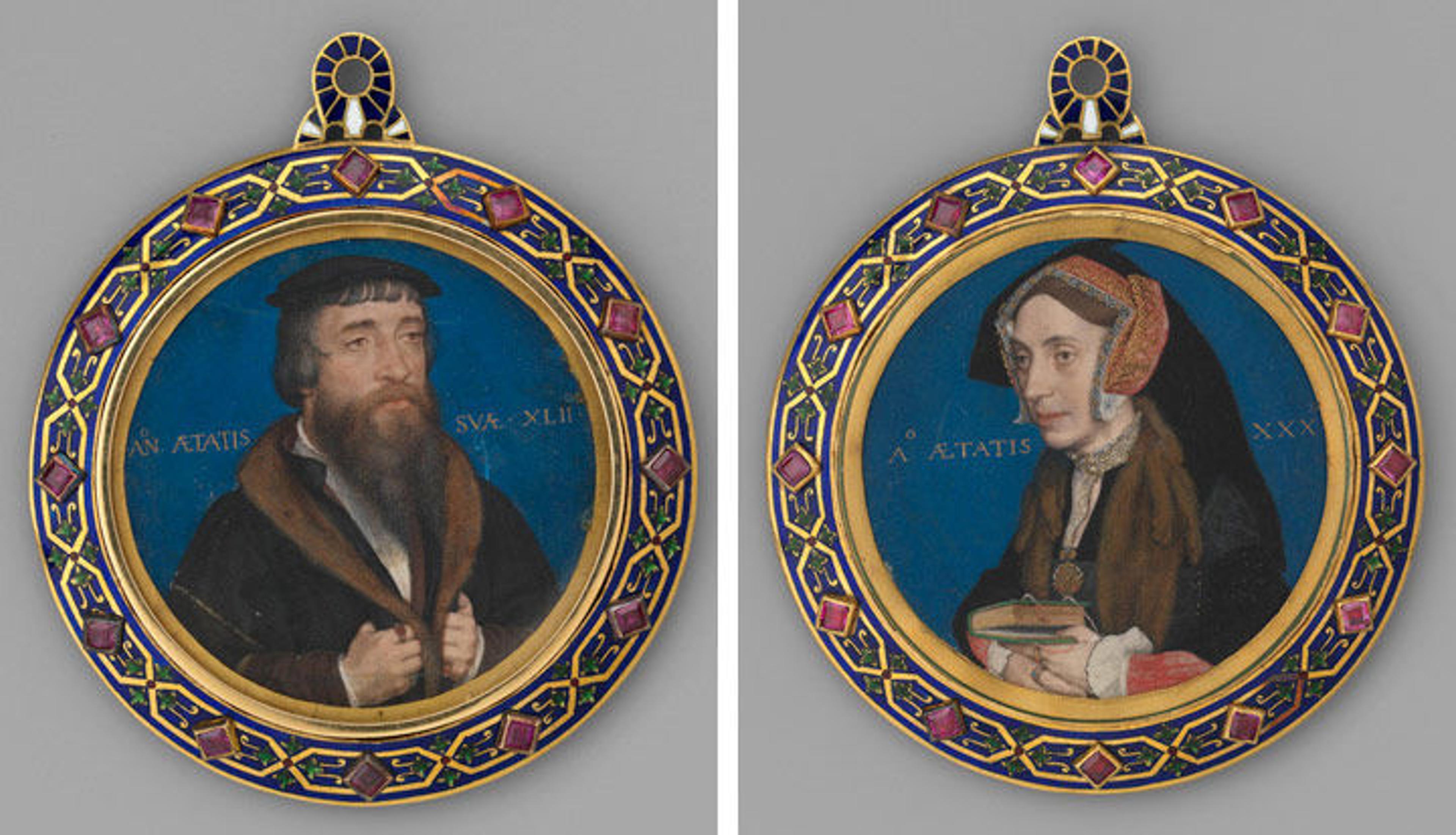The Complex World of Small Things: Hands That Make, Hold, and Mend

Left: Fig. 1. Hans Holbein the Younger (German, 1497/98–1543). William Roper (1493/94–1578), 1535–36. Vellum laid on card; diameter 1 3/4 in. (45 mm). The Metropolitan Museum of Art, New York, Rogers Fund, 1950 (50.69.1). Right: Fig. 2. Hans Holbein the Younger. Margaret More (1505–1544), Wife of William Roper, 1535–36. Vellum laid on card; diameter 1 3/4 in. (45 mm). The Metropolitan Museum of Art, New York, Rogers Fund, 1950 (50.69.2)
«According to the 18th-century German philosopher Immanuel Kant, hands are "man's outer brain." They form what we conjure up in our heads; they are the tools of our consciousness. The idea that the brain coordinates the hand and eye to create extraordinary works of art was on my mind while I was examining and conserving portrait miniatures at The Met this spring. While here on a one-month exchange program with the Victoria and Albert Museum, I contemplated the hands that created the Museum's tiny 16th- and 17th-century European portraits, the hands that held them over the past 400 years, and the hands that conserve them.»
Structurally complex, hands are among the most powerful tools humans have. Fingers house a high density of nerve endings, helping us to "read" objects with our hands, not just our eyes. Many conservators are skilled craftspeople who make as well as mend things. As reconstruction is often an important part of conservation, they are curious about how things are made. Portrait miniatures enclosed in lockets or cases are tactile objects made to be held or worn, thus hands are critical not only for the production of these objects but also for their comprehension and conservation.
Although it is not commonplace for hands to be represented in portrait miniatures, The Met houses two exceptions by Hans Holbein the Younger, who painted William Roper (fig. 1)—a Kentish landowner, lawyer, and four-time member of Parliament—and his wife, Margaret More (fig. 2), the eldest daughter of Sir Thomas More. In these early 16th-century circular pendants, William grasps his furry lapels while Margaret holds a book, which signifies her dedication to learning. Even though each painting measures only 1 3/4 inches in diameter, the minute detail and technical finesse of the compositions are astonishing.

Left: Fig. 3. Nicholas Hilliard (British, ca. 1547–1619). Portrait of a Woman, 1597. Vellum; oval, 1 7/8 x 1 1/2 in. (47 x 39 mm). The Metropolitan Museum of Art, New York, Fletcher Fund, 1935 (35.89.2). Right: Fig. 4. Detail view of 35.89.2 showing the intricacy of the neckpiece's lacework
In the late 16th century, Nicholas Hilliard, who stated that he "ever imitated, and [held] for the best" Holbein's tiny portraits, took the art of miniature painting to another dimension. Observe in Portrait of a Woman (fig. 3) the intricacies of the network of white lacy lines and the fluidity of the gold letters, as well as the mimicry of precious jewels in silver, gold, and colored resins. As seen in a highly magnified detail (fig. 4), the sitter's lace collar is subtly three dimensional, like icing piped onto a cake.
How exactly did Hilliard do that? The level of detail in these portraits is hard to fathom. Painting a miniature leaves little room for error in a fairly tight compositional space. Immensely skilled, miniaturists would have had to have steady hands. Their minute craftsmanship can best be appreciated when their works are observed under substantial magnification, causing one to wonder how the artists themselves could have seen the images they were creating. The next time you visit the V&A or The Met, find the miniatures and get as close to them as you can. They are small but there is much to discover.
Editor's Note: A lengthier version of this blog post originally served as part of a three-post series published on the Victoria and Albert Museum's blog.
Related Link
RumiNations: "Games of Scale in a Golconda Painting" (May 26, 2015)
Victoria Button
Victoria Button is a senior paper conservator at the Victoria and Albert Museum, London, with an interest in Old Master prints and drawings as well as portrait miniatures. Her doctorate was on the materials and techniques of Hans Holbein the Younger's portrait drawings.